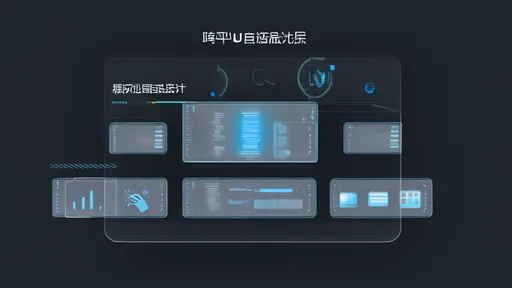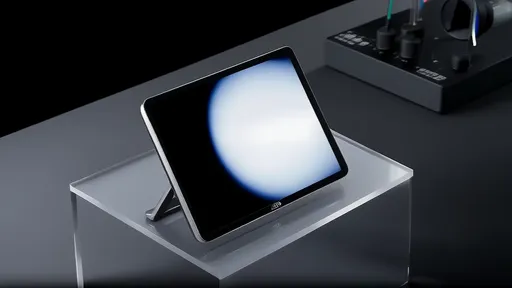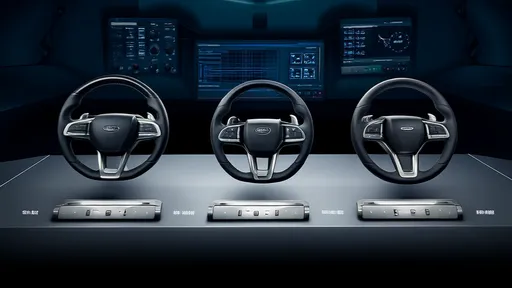The rise of scrollable display smartphones has introduced a new frontier for mobile gaming, presenting both exciting opportunities and formidable technical challenges. As manufacturers push the boundaries of flexible screen technology, game developers find themselves navigating uncharted territory to create immersive experiences that leverage these innovative form factors.
Adapting to dynamic screen real estate represents one of the most fundamental hurdles in scrollable display gaming. Unlike traditional smartphones with fixed aspect ratios, these devices can physically expand or contract their display area during gameplay. This fluidity requires game engines to handle resolution changes on the fly without crashing or compromising visual fidelity. Developers must implement responsive UI systems that can gracefully adjust elements like HUDs, menus, and control schemes across multiple display configurations.
The mechanical nature of scrollable displays introduces unique performance considerations. The expansion mechanism creates subtle vibrations and movement that can affect touch input accuracy. Games must account for these physical variations while maintaining precise control responsiveness. Additionally, the folding areas of screens often have slightly different display characteristics than flat sections, requiring careful color calibration and brightness adjustment algorithms.
Content scaling presents another layer of complexity. Traditional mobile games typically design for specific aspect ratios, but scrollable devices demand content that looks polished whether viewed on a compact screen or fully expanded display. This goes beyond simple UI scaling - game worlds, camera systems, and even gameplay mechanics may need to adapt based on available screen space. Some developers are experimenting with dynamic level design that reveals additional content as the screen expands, creating a literal unfolding narrative experience.
The hardware limitations of current scrollable phones add further complications. The flexible displays often have lower maximum brightness compared to rigid OLED panels, impacting visibility in various lighting conditions. Additionally, the mechanical components required for screen expansion leave less internal space for cooling solutions, leading to more aggressive thermal throttling during extended gaming sessions. Developers must optimize their games to run efficiently within these constraints while still delivering next-generation experiences.
Input method innovation has become crucial for scrollable display gaming. The expanded screen real estate enables new control schemes that wouldn't be practical on traditional smartphones. Some developers are exploring multi-region touch inputs that take advantage of the larger surface area, while others are experimenting with pressure-sensitive controls that respond differently based on how much the screen is expanded. These novel input systems require extensive playtesting to ensure intuitive usability across different screen configurations.
The gaming industry's response to these challenges has been remarkably creative. Several major game engines have introduced native support for scrollable displays, including automatic resolution scaling and dynamic UI tools. Some developers are creating "transformative" gameplay experiences where the physical act of expanding the screen becomes part of the game mechanics - imagine solving puzzles by adjusting screen size or revealing hidden map areas through display expansion.
As the technology matures, we're seeing the emergence of scrollable display-specific gaming features. These include dynamic field-of-view adjustments in 3D games, context-sensitive controls that reposition based on screen size, and even haptic feedback systems that synchronize with the screen's mechanical movement. The most successful implementations make the scrollable display feel like an essential part of the gaming experience rather than just a hardware novelty.
The road ahead for scrollable display gaming remains challenging but promising. With each generation of devices, manufacturers are improving display durability, touch responsiveness, and thermal performance. Meanwhile, game developers continue to push creative boundaries, discovering new ways to integrate the unique capabilities of scrollable displays into compelling gameplay experiences. As the technology becomes more mainstream, we can expect to see increasingly sophisticated games that truly harness the potential of this innovative form factor.
Looking forward, the intersection of scrollable display technology and mobile gaming may redefine what we expect from handheld gaming experiences. The ability to physically adjust screen size opens possibilities for hybrid gaming-tablet experiences that adapt to different play styles and environments. While significant technical hurdles remain, the creative solutions emerging from these challenges suggest an exciting future for the evolution of mobile gaming hardware and software alike.

By /Jul 29, 2025

By /Jul 29, 2025

By /Jul 29, 2025

By /Jul 29, 2025

By /Jul 29, 2025

By /Jul 29, 2025

By /Jul 29, 2025

By /Jul 29, 2025

By /Jul 29, 2025

By /Jul 29, 2025

By /Jul 29, 2025

By /Jul 29, 2025

By /Jul 29, 2025

By /Jul 29, 2025

By /Jul 29, 2025

By /Jul 29, 2025

By /Jul 29, 2025

By /Jul 29, 2025

By /Jul 29, 2025

By /Jul 29, 2025